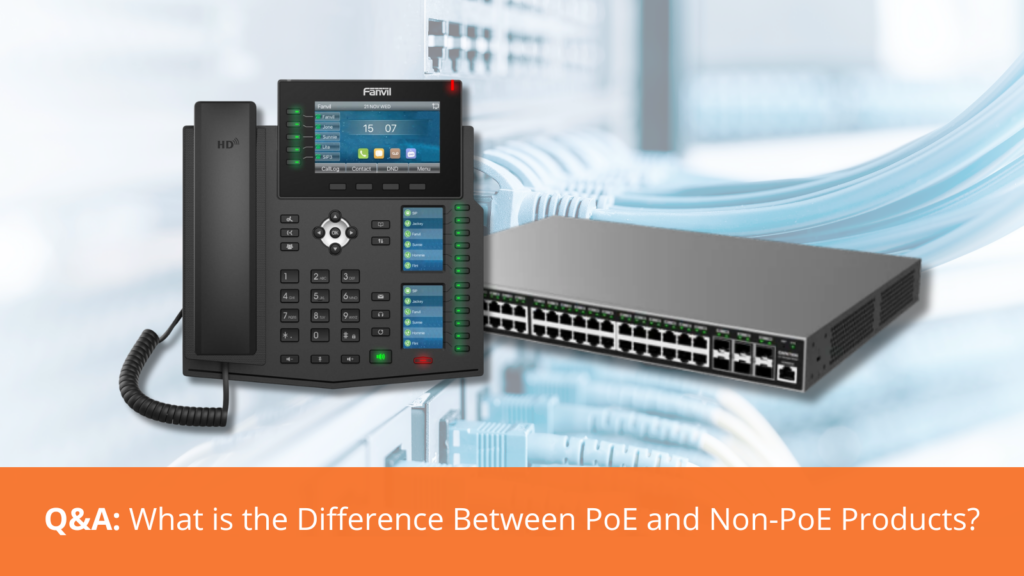How many different acronyms do we have to remember nowadays? And we also have to know what exactly they mean!? And then we have to choose the right acronym-type product that fits our specific application?! Well, yes. But the experts at VoIP Supply can help! You have probably seen PoE and Non-PoE when referring to networking equipment and we’re here to break it all down for you as well as help you choose what you need. This blog post will help you understand the differences and provide a few examples of each.
What’s the Difference?
The main difference between a Power over Ethernet (PoE) product and a non-PoE product lies in how they receive power.
1. PoE Product:
PoE products, such as PoE switches, access points, IP cameras, and VoIP phones, are designed to receive both power and data over a single Ethernet cable. They eliminate the need for separate power cables, simplifying installation and reducing clutter.
PoE devices comply with IEEE standards such as 802.3af, 802.3at, or 802.3bt, depending on the power requirements of the device.
PoE allows for remote powering of devices, which can be particularly useful for devices installed in locations where power outlets are not readily available.
2. Non-PoE Product:
Non-PoE products, on the other hand, require a separate power source to operate.
These devices typically rely on traditional power adapters or power outlets for electricity.
While non-PoE devices may require additional cabling for power, they may offer higher power capacities than what PoE can deliver, depending on the specific application and power requirements.
Product Examples Include…
A PoE switch is a network switch that provides power and data to PoE-enabled devices over Ethernet cables. An example is the Grandstream GWN7806(P) Enterprise Layer 2+ Managed Network Switch which has smart power control to support dynamic PoE/PoE+ power allocation per port for the PoE models. A Non-PoE switch, like many traditional network switches, does not provide power over Ethernet. The Grandstream Layer 2+ 48 Port Managed Network Switch GWN7806 is the non-PoE version of the GWN7806(P), which has additional differentiating factors.
The Cisco Meraki MR36H Wireless Access Point is a PoE Access Point, a cloud-managed wireless access point that can receive power and data over Ethernet. An example of a Non-PoE Access Point is the Cisco Meraki MR20 Wireless Access Point.
The Fanvil X6U-V2 Executive level IP Phone is a PoE VoIP Phone that is easy to deploy in office environments without requiring separate power adapters. One of the Non-PoE VoIP Phones available is the Grandstream GRP2602W IP Phone which may be beneficial if used internally within an organization.
The key distinction between PoE and non-PoE products is the method by which they receive power. PoE products receive power over the Ethernet cable, while non-PoE products require a separate power source. The choice between PoE and non-PoE depends on factors such as installation convenience, power requirements, and the specific needs of the network or application.
VoIP Supply can assist you with finding the right product for you. Comment below, chat with us at www.voipsupply.com, or call us at 1-800-398-8647.
The post Q&A: What is the Difference Between PoE and Non-PoE Products? appeared first on VoIP Insider.

